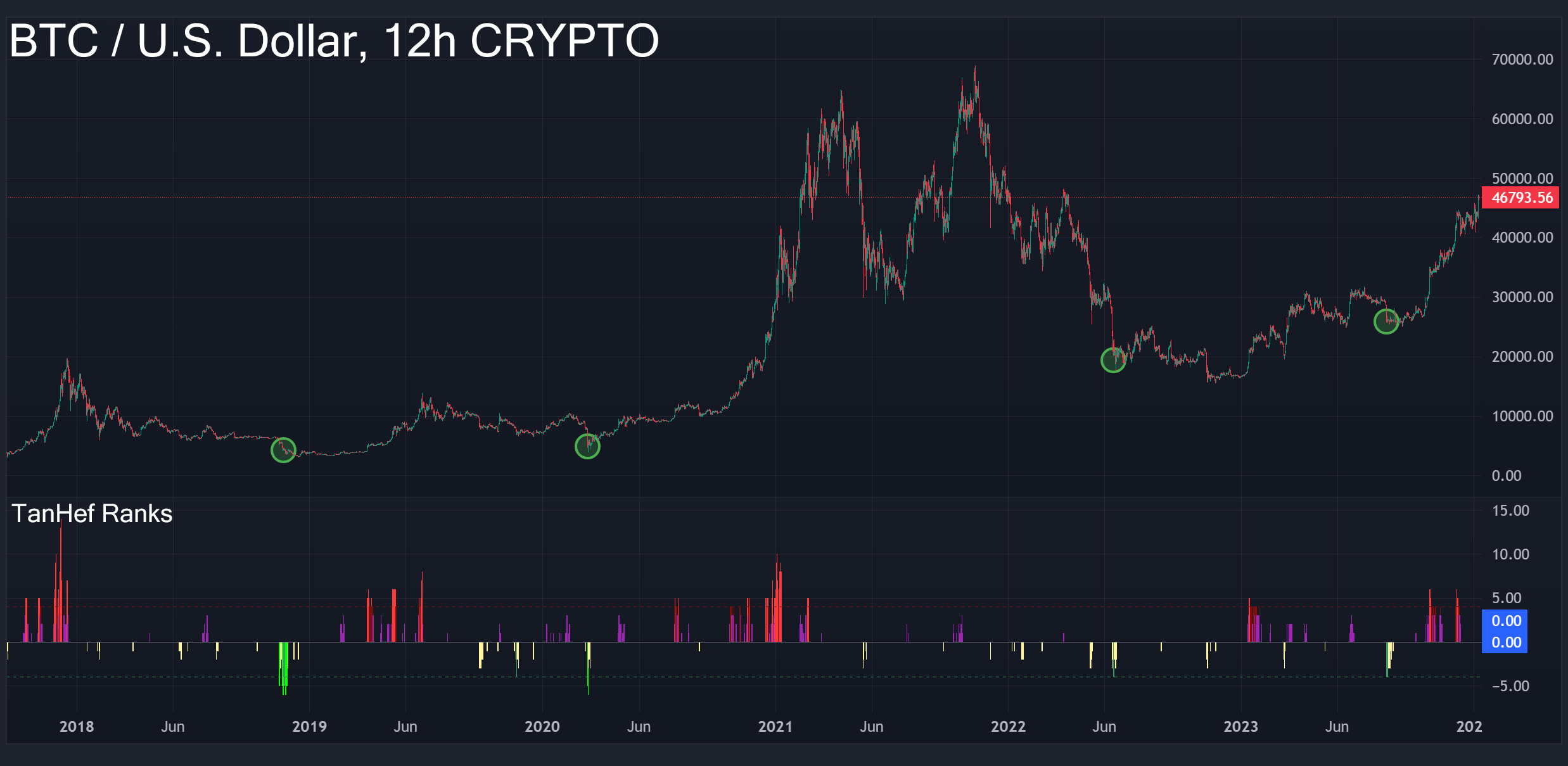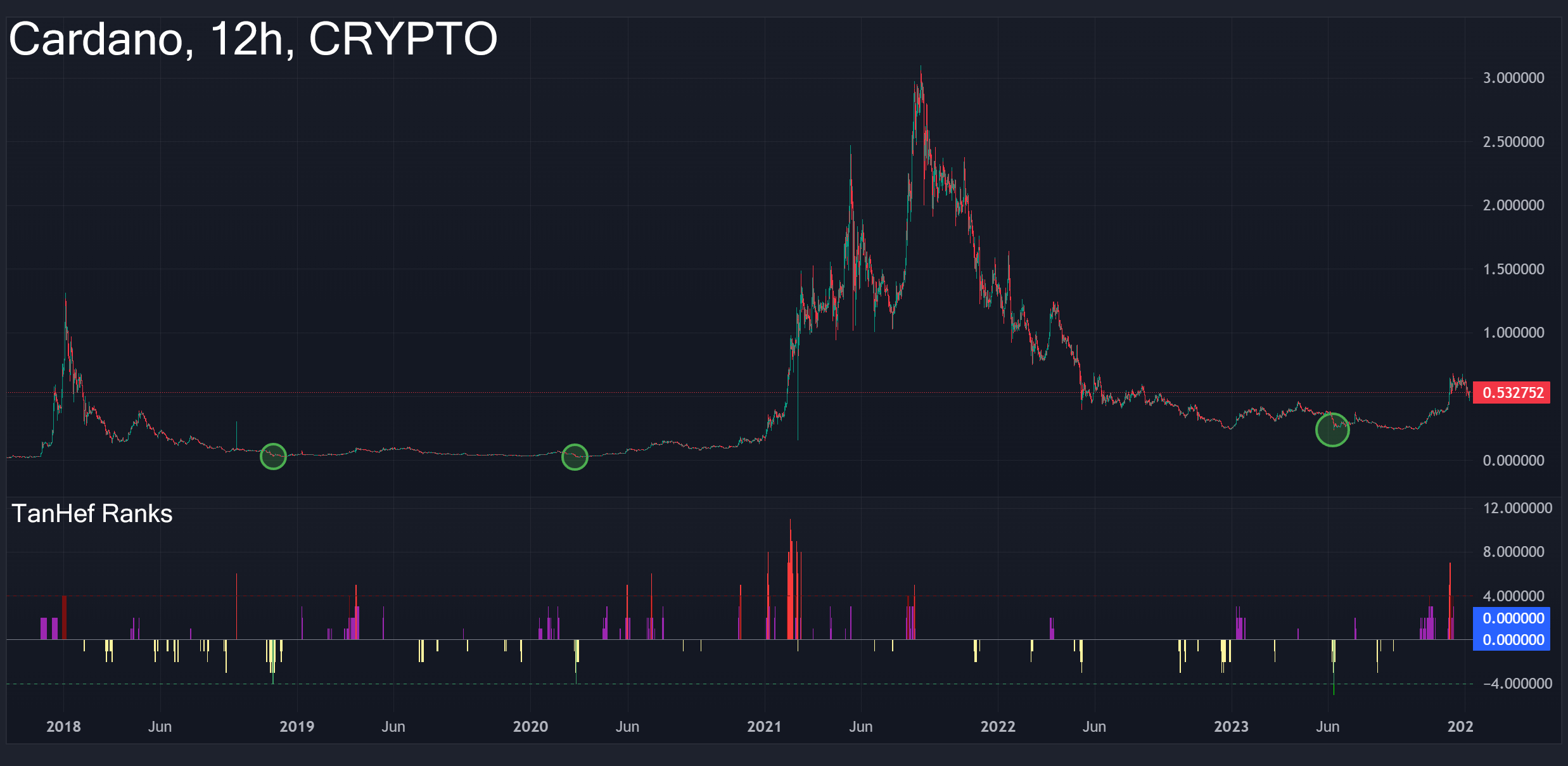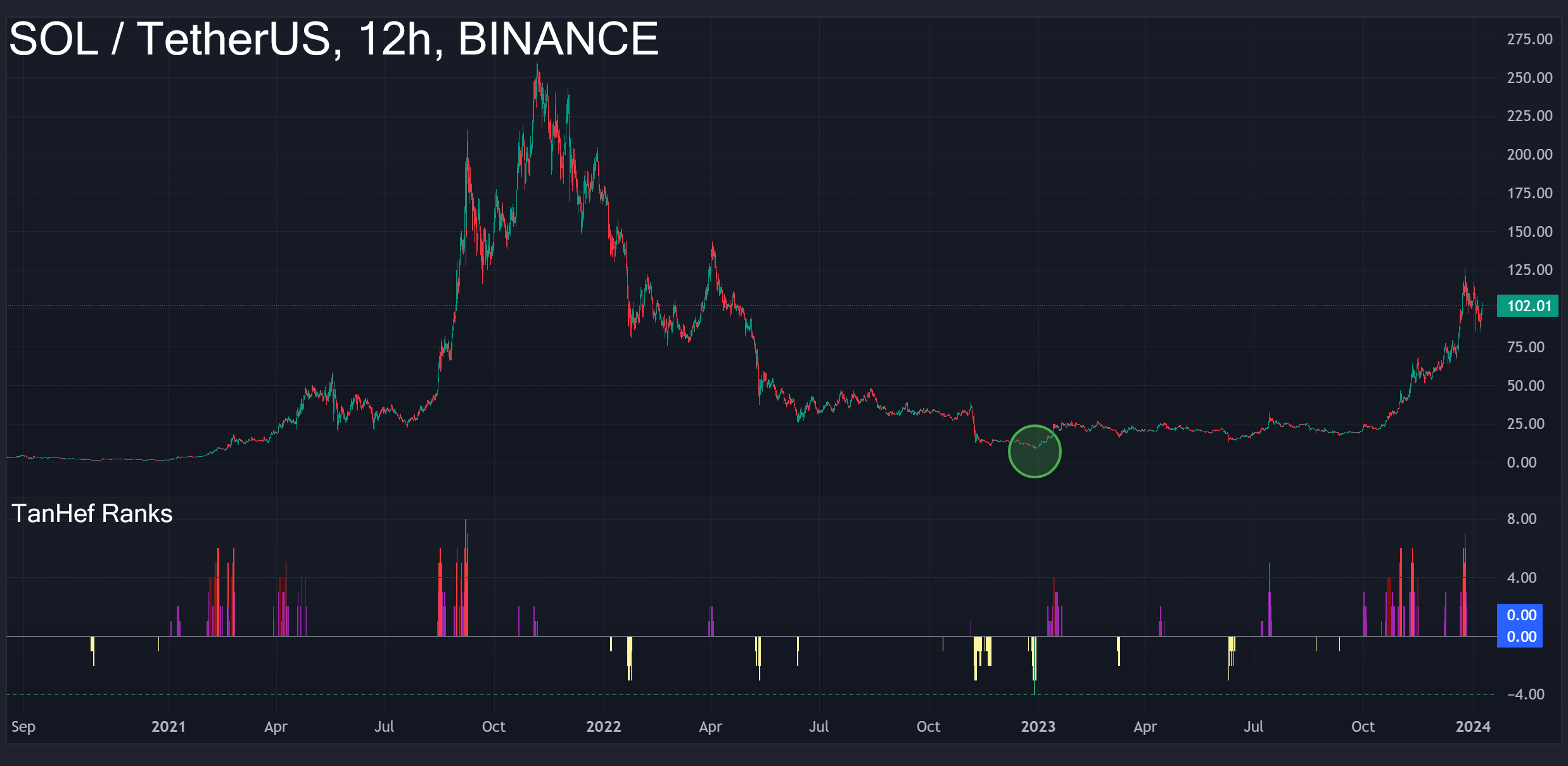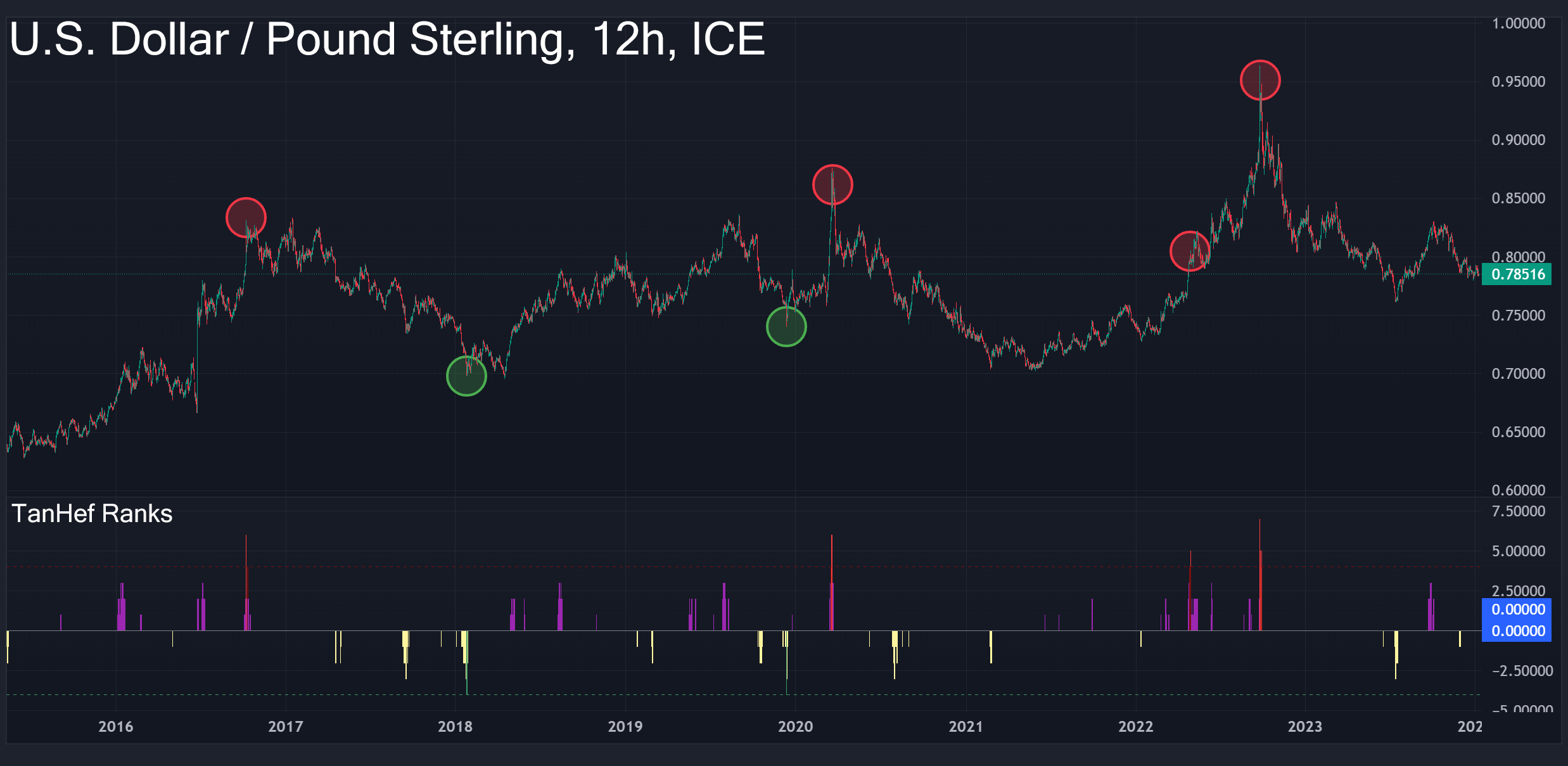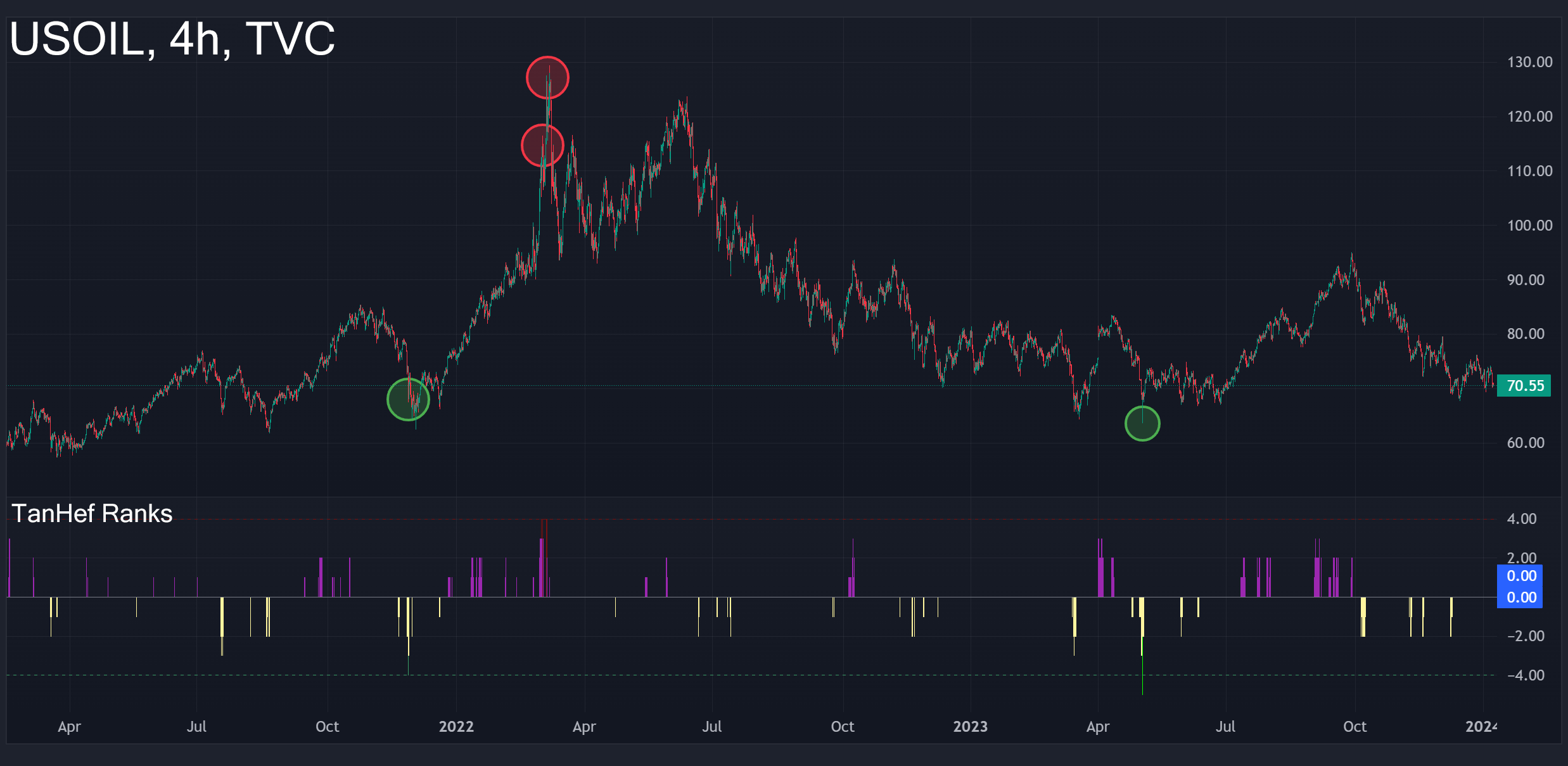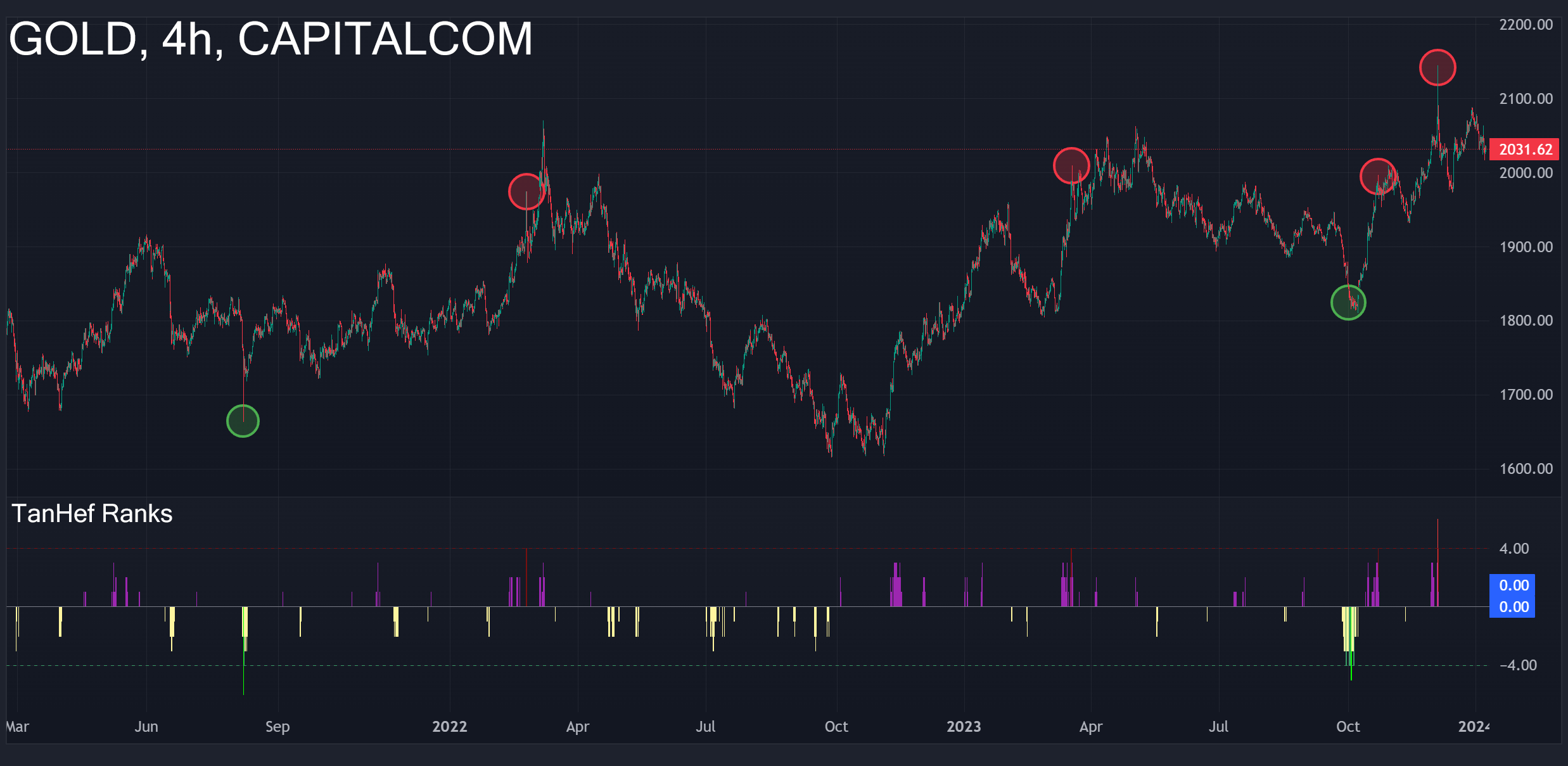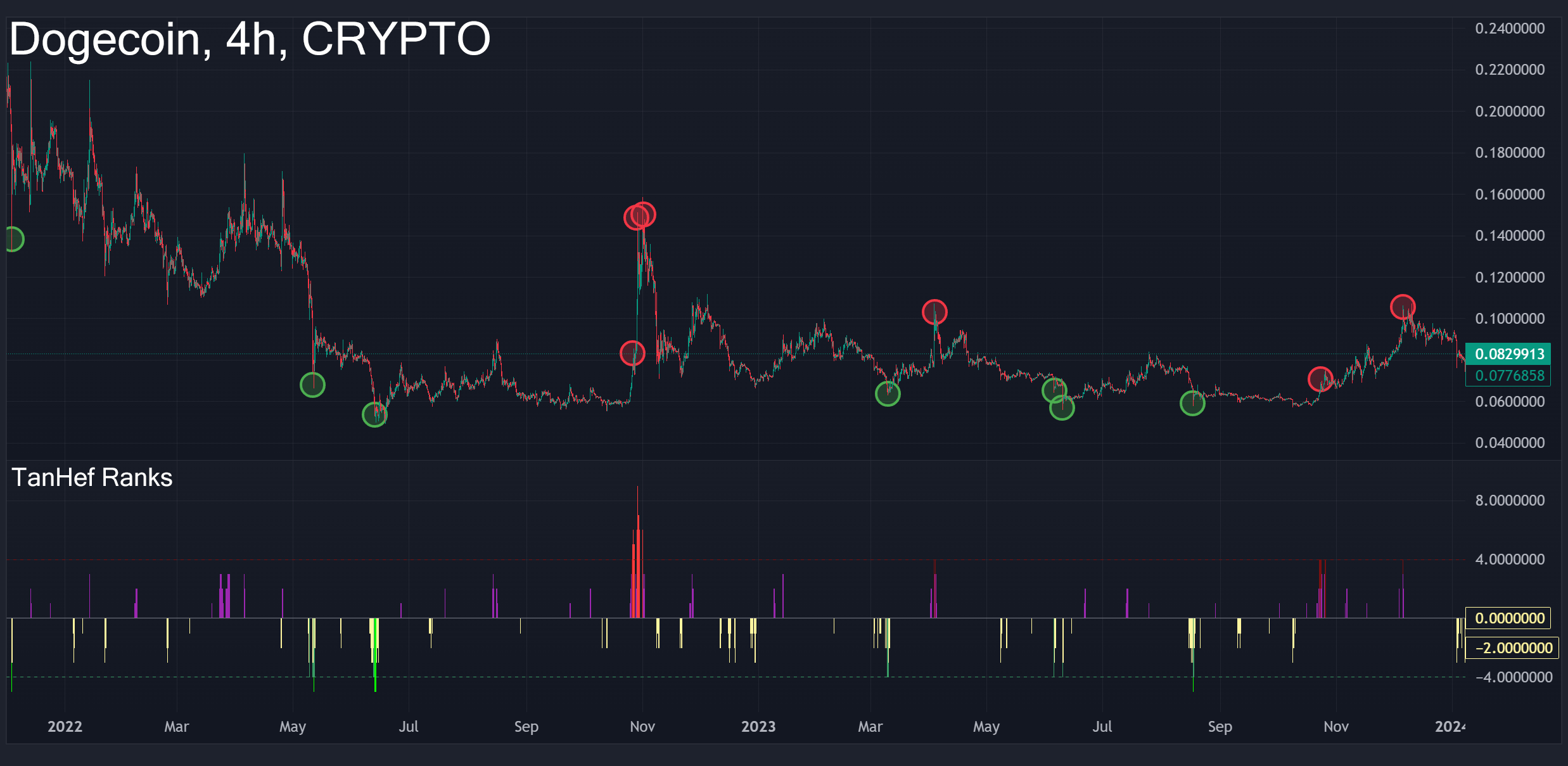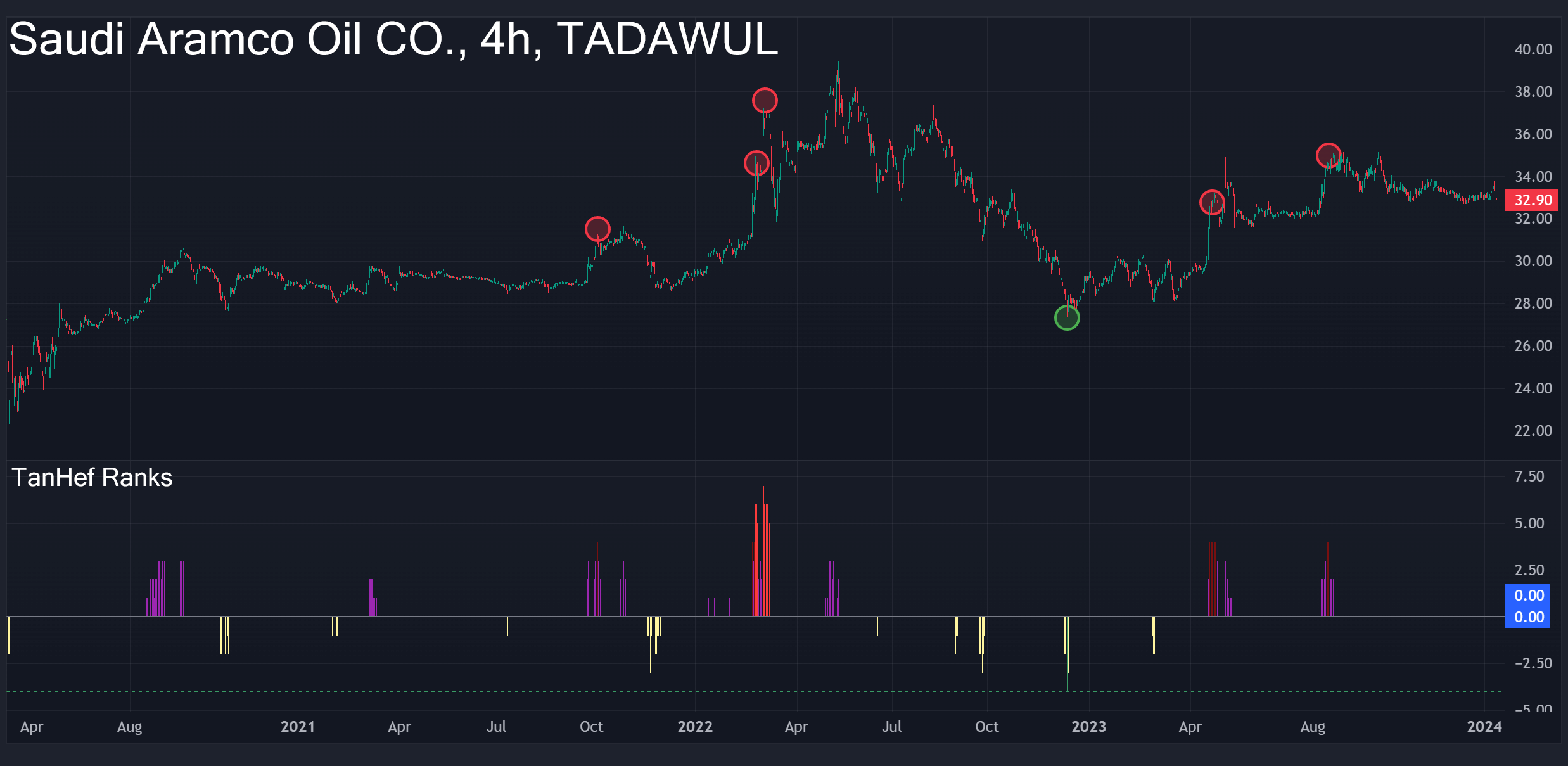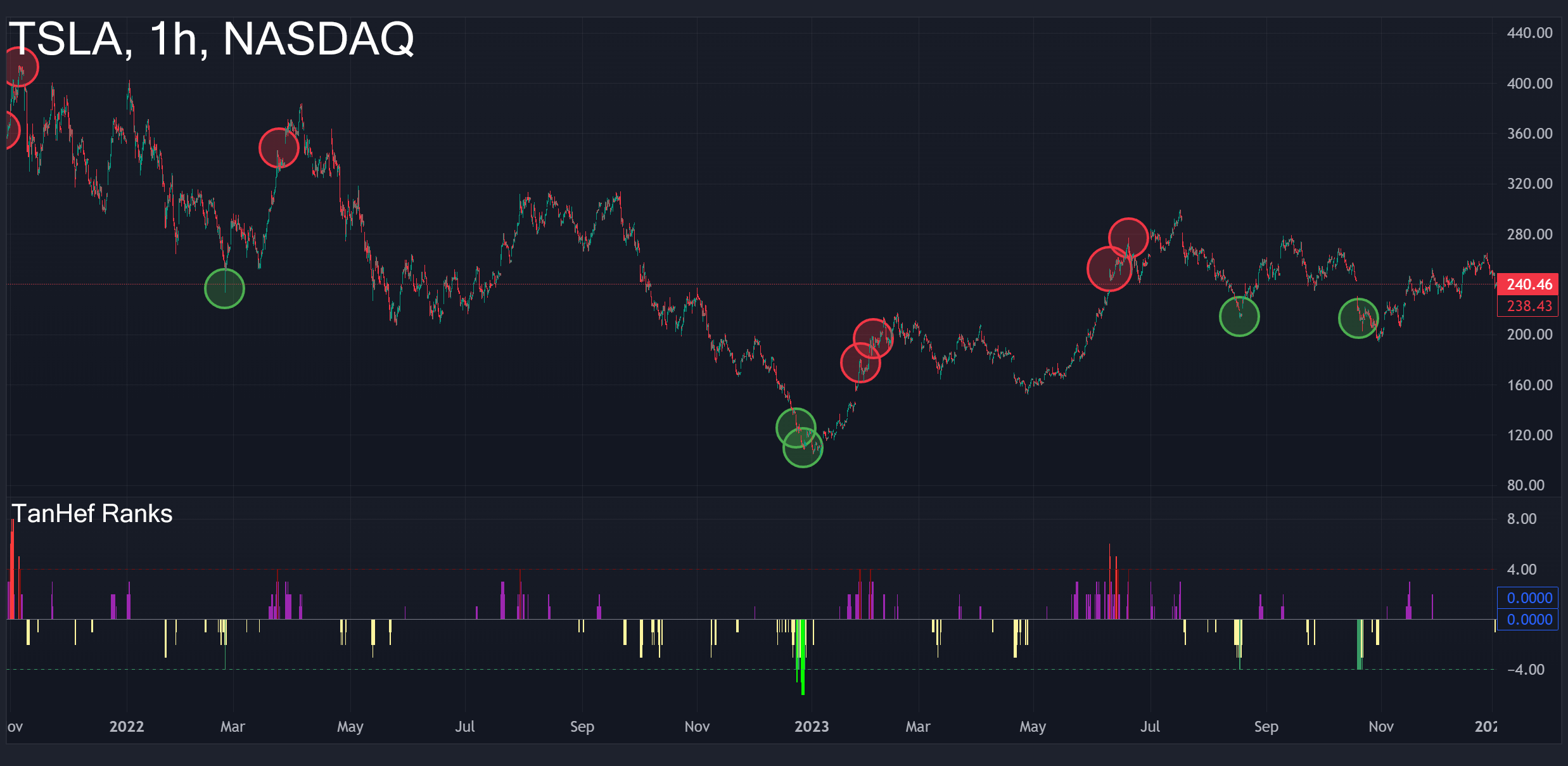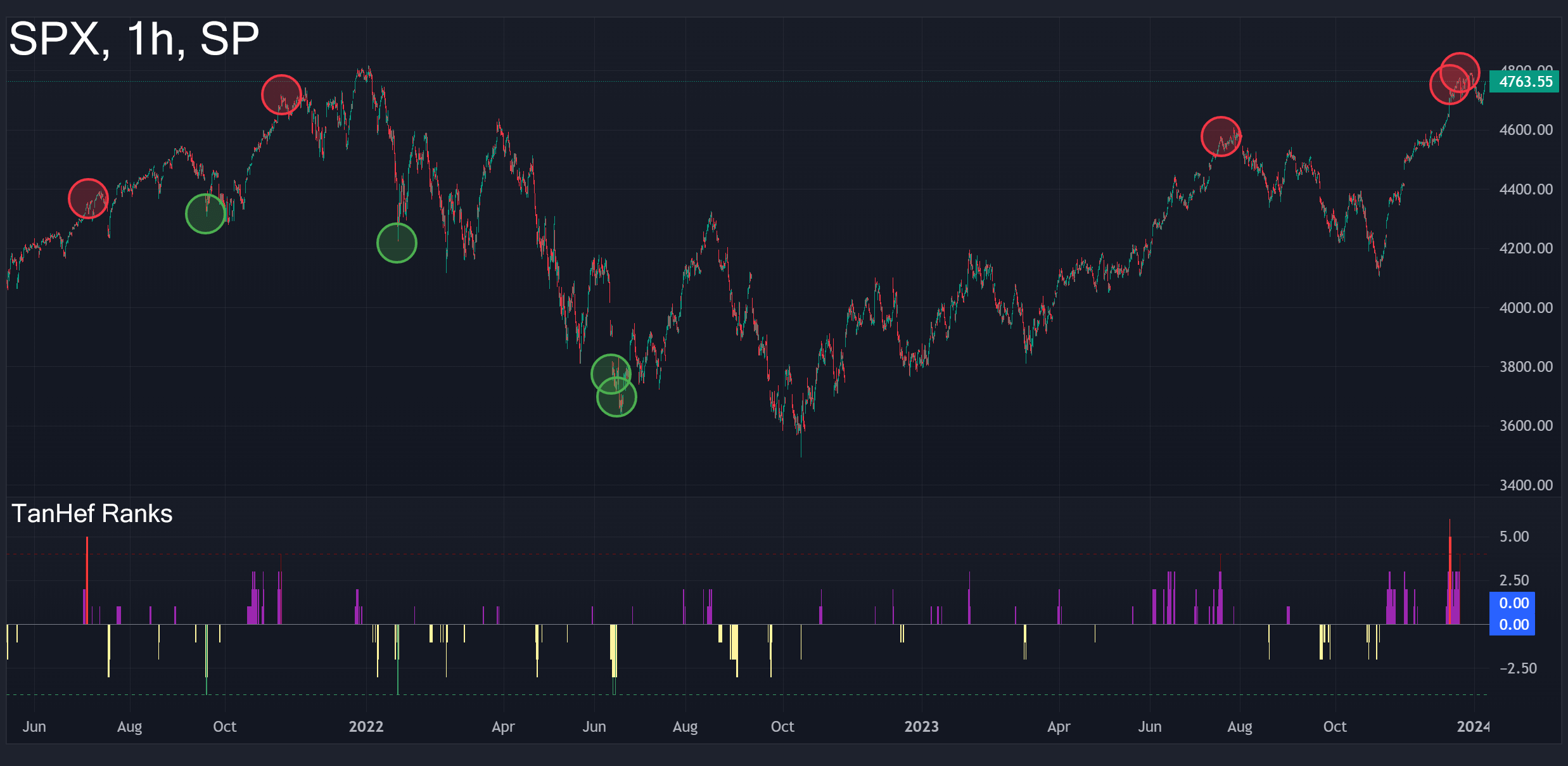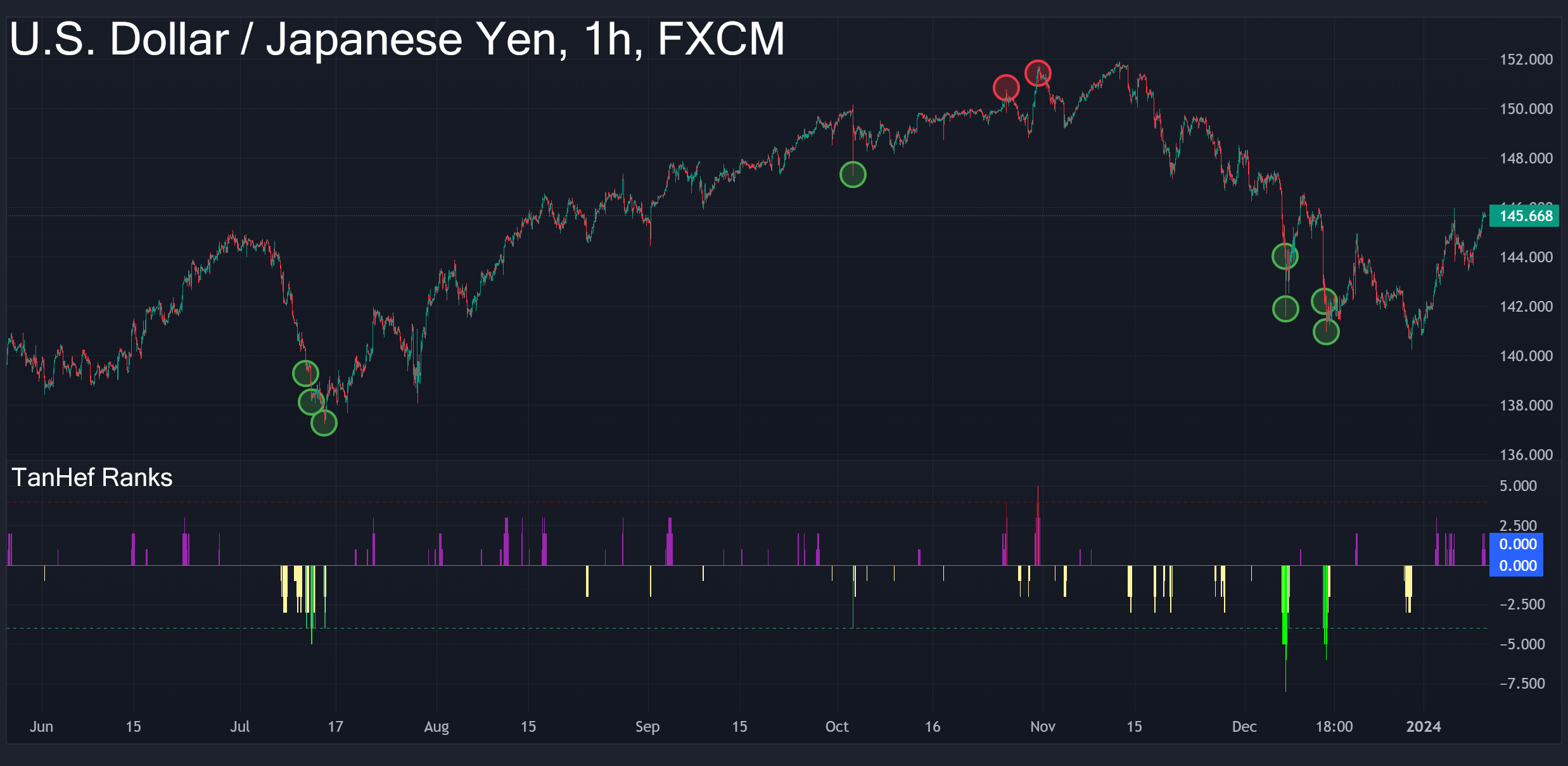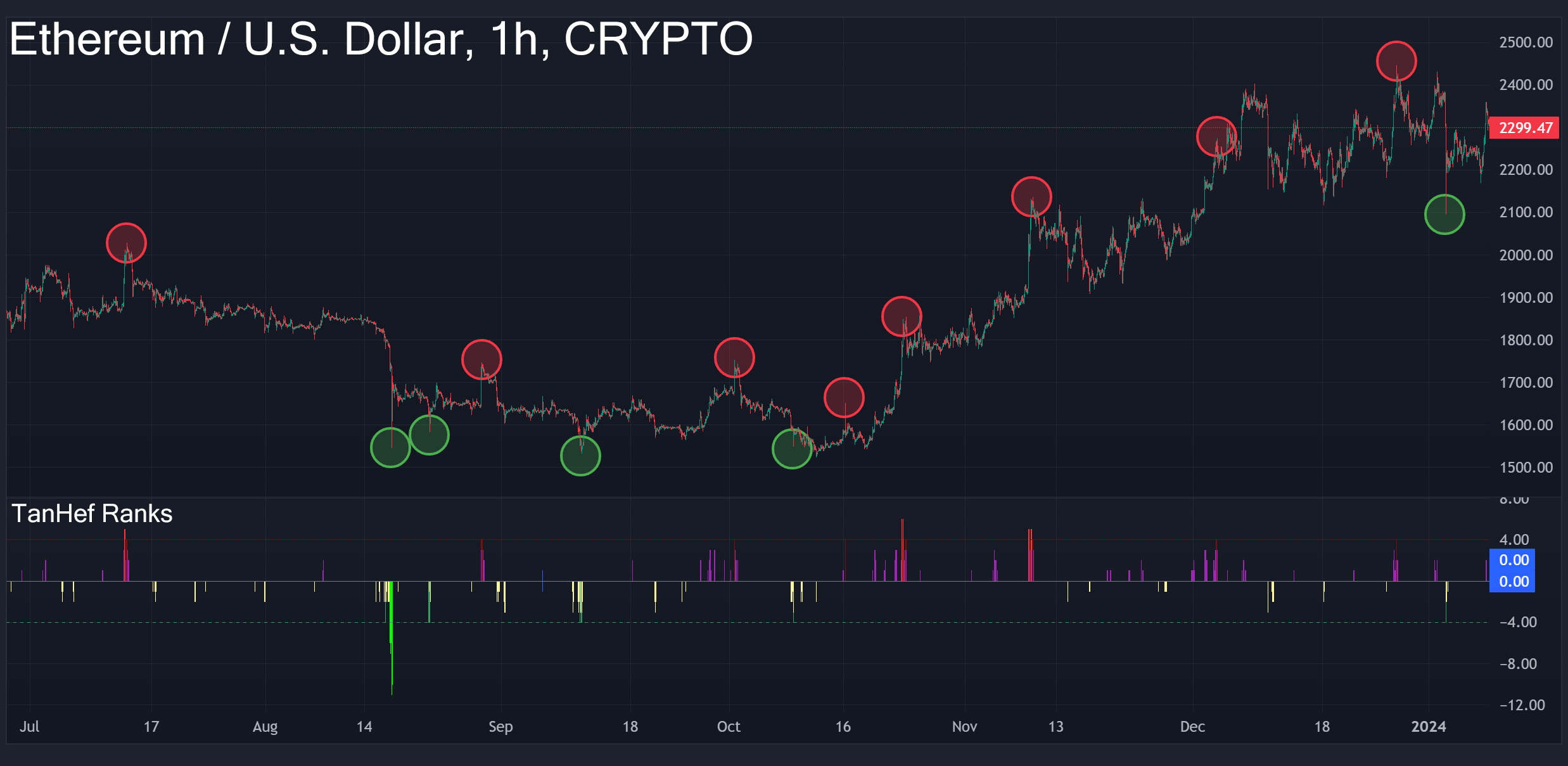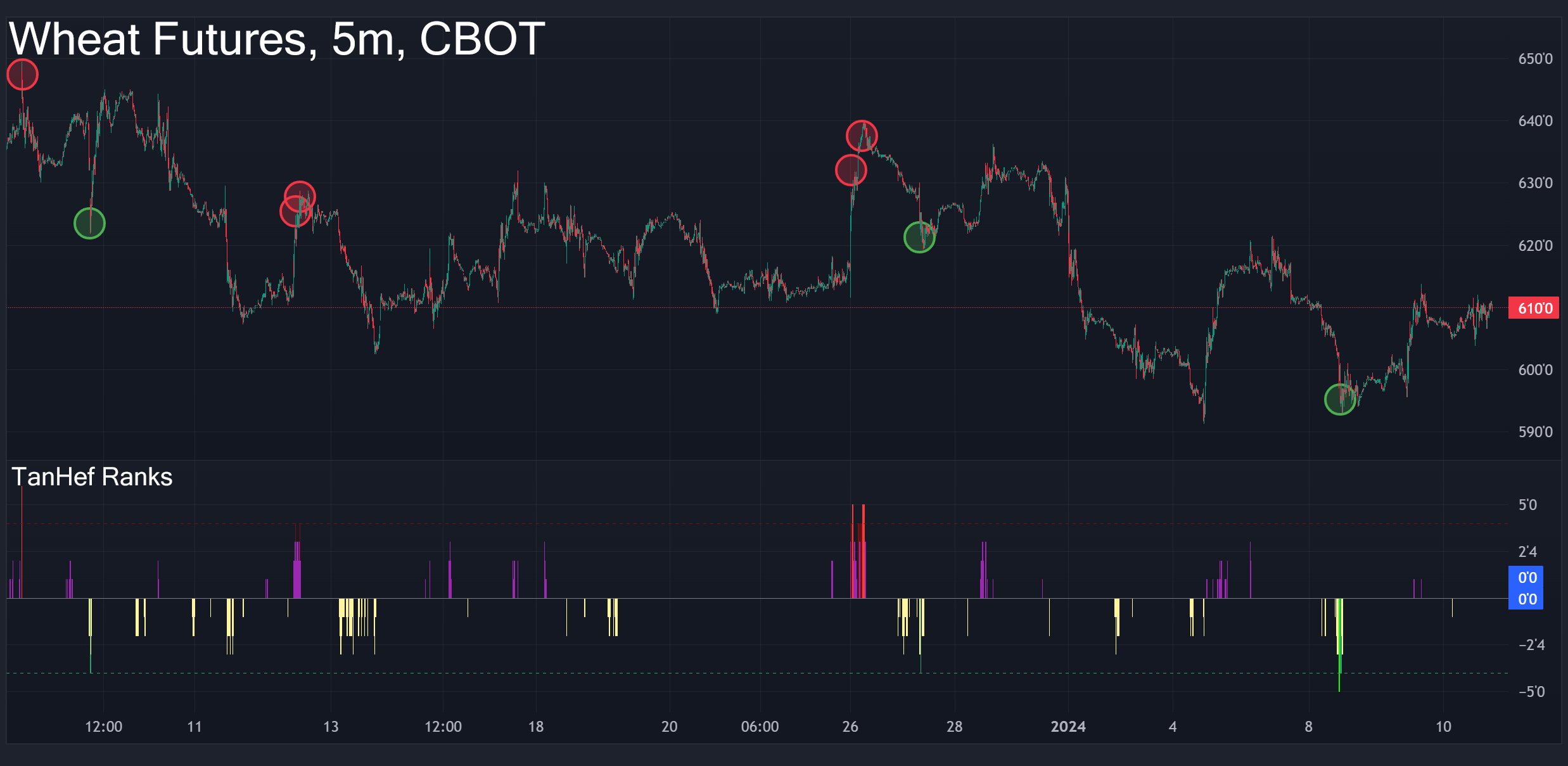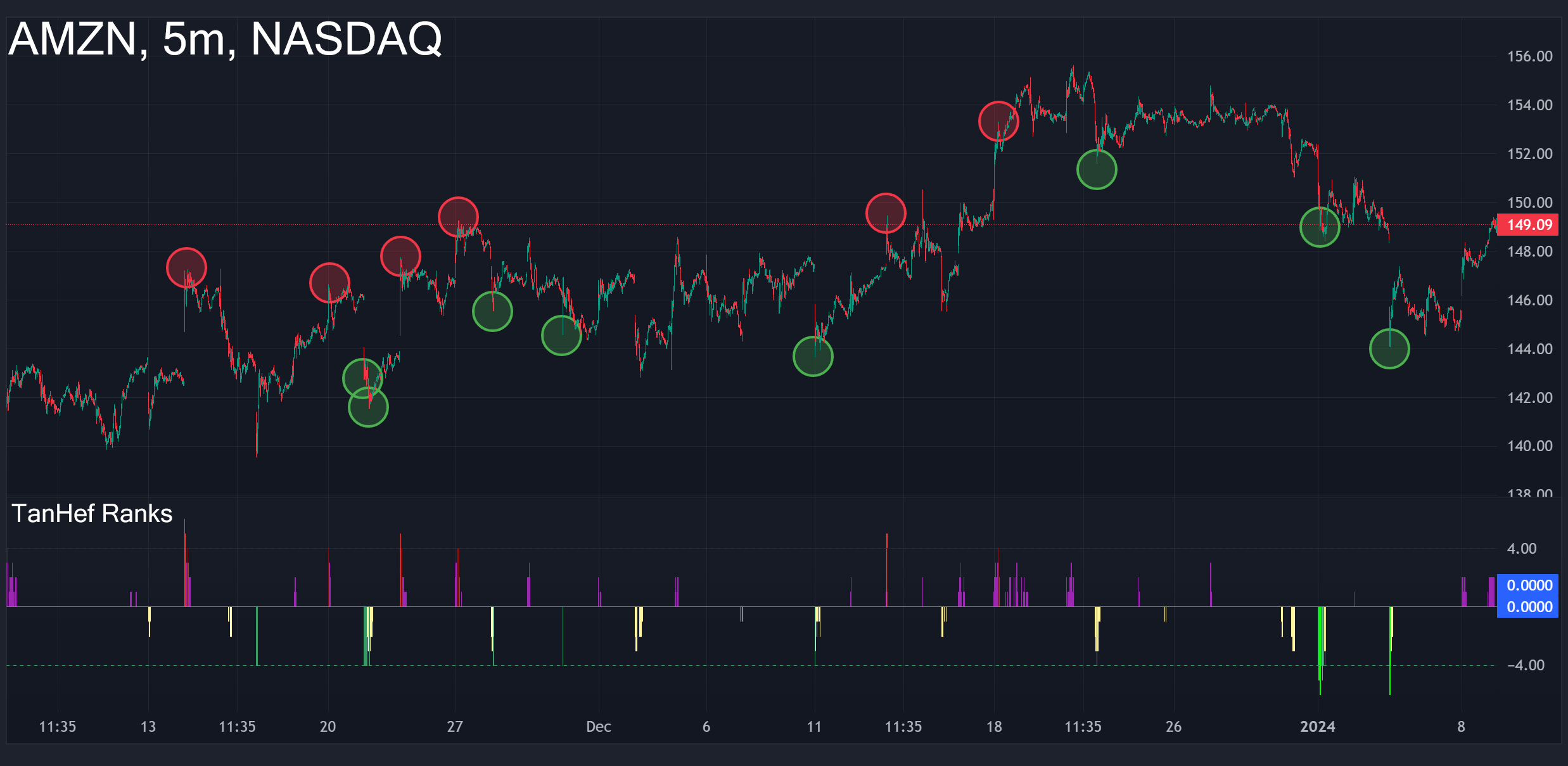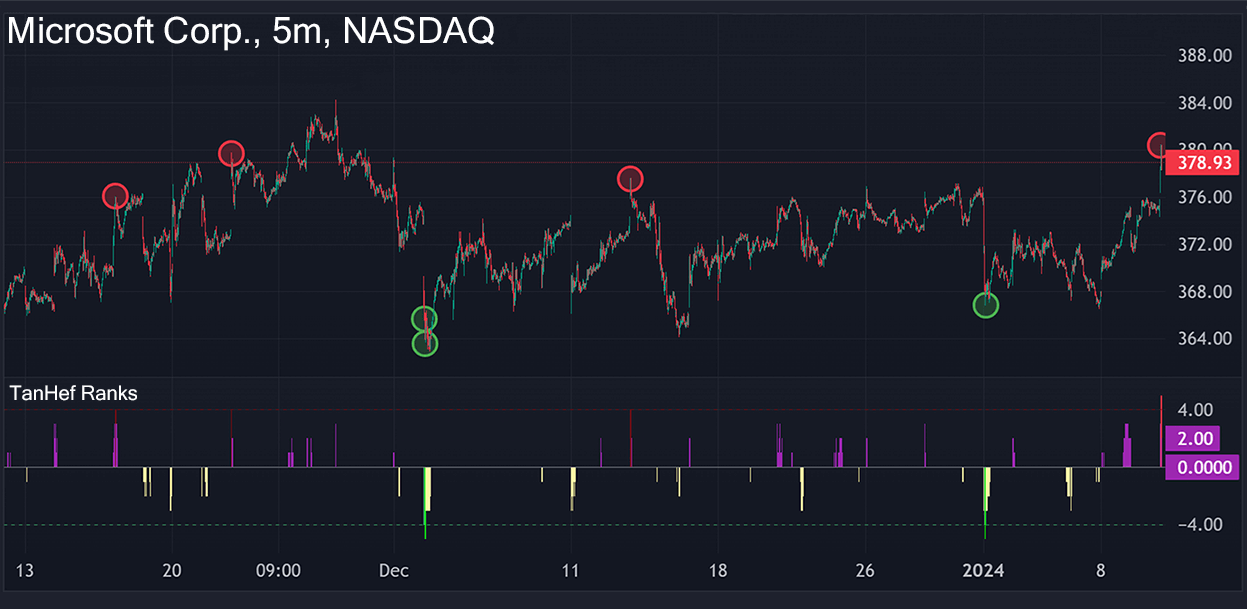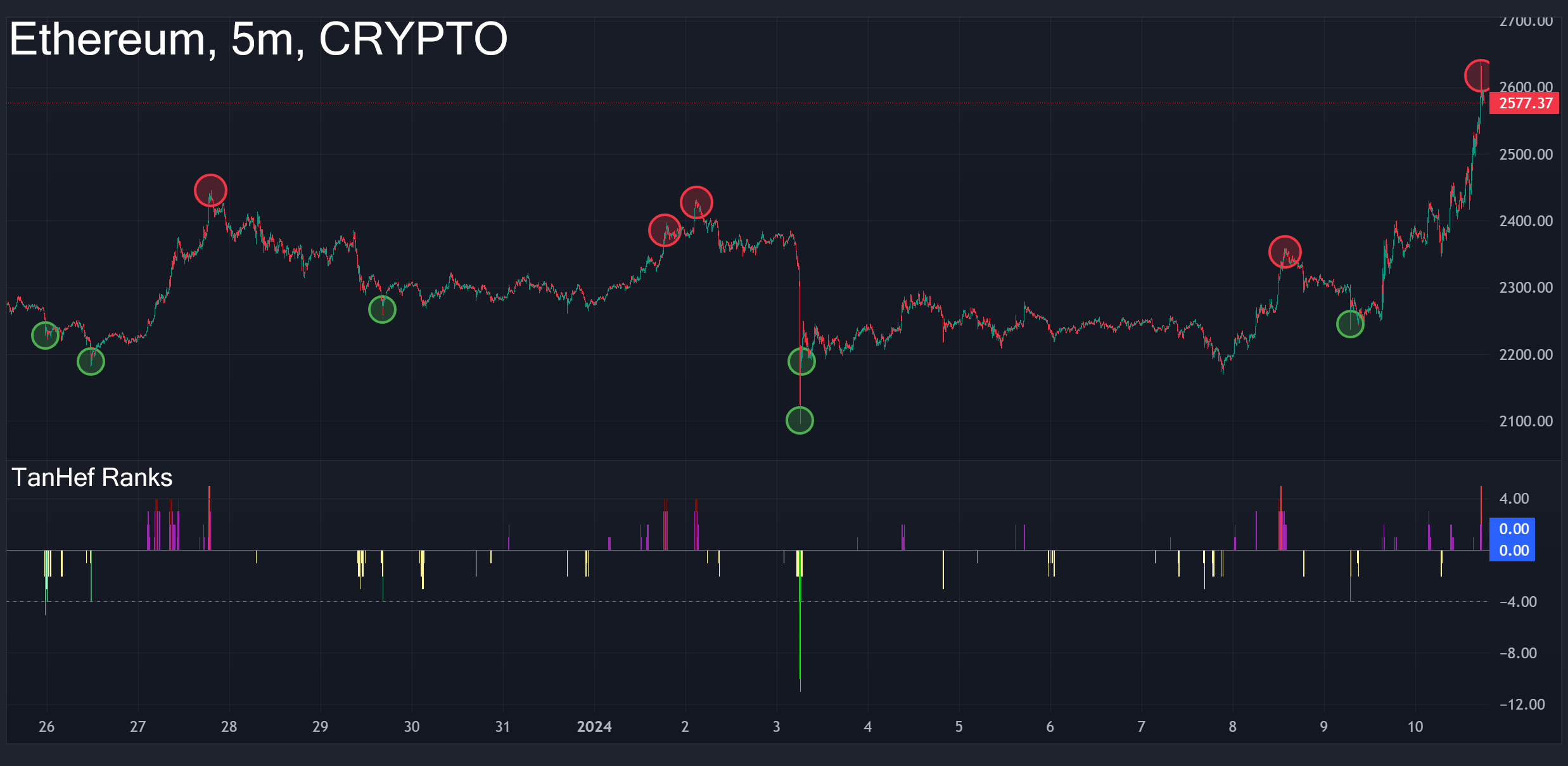TanHef Ranks Indicator: Your Numeric Compass to the Market
The TanHef Ranks indicator signals 'buy low and sell high' opportunities through numerical rankings, where larger numbers represent stronger signals. These numbered rankings are negative for potential ‘buy’ opportunities and positive for possible ‘sell’ moments. (Indicator here)

🔍 What Does TanHef Ranks Indicate?
TanHef Ranks is a unique tool that uses numeric values (from +18 to -18) to identify and take advantage of market tendencies of prices reverting back to their historical average, also known as mean reversion. It operates on a simple principle: smaller values signal a potential for short-term mean reversion, while larger values suggest a probable shift in both short and long-term mean reversion. These values are derived from a careful analysis of both short and long-term mean reversions, providing traders with a nuanced understanding of market movements.📈 Detecting Extreme Numeric Rankings
All numeric rankings are recorded into a table to identify their occurrences. We want to identify the extreme rankings (larger absolute values) as they are historically the most probable at identifying an end of a price move after a large price move in one direction or a price direction reversal, to aid in higher propability entries and exits.📊 Calculation Methodology
The indicator evaluates price momentum by comparing the strength of previous price bars' upward and downward movements, calculating a complex ratio of up bars to down bars. A numerical ranking is assigned based on this ratio. It focuses on confluence by aligning short, medium, and long-term price movements, boosting its reliability.🔄 Does TanHef Ranks Repaint?
'Repainting' changes past signals with new data, which unlike many, this indicator avoids. Closed bars have fixed values, ensuring no repainting. Open bars may increase in value but never decrease, ensuring stability.
Detecting Extremes in Mean Reversion Trading
Every asset has its own trading characteristics, making it vital to use historical data of a specific asset to predict a likely mean reversion. The provided image illustrates a table where the frequency of each ranking, ranging from up to +18 to -18. However, in certain historical data sets, not all rankings are represented. By identifying the most extreme rankings within the available historical context, one can enhance the timing of market entries and exits.Examining Probability Indicators in Mean Reversion
In the example illustrated below, there's a notable instance of a +9 ranking (🟢), which has occurred only once before. Contrastingly, a +8 ranking, while appearing once in this example, has historically occurred four times, suggesting a higher probability of a mean reversion with an upward trend. This pattern indicates that the frequency of specific rankings can be a valuable indicator for predicting asset behavior and timing market entries.
Chart Examples
🟢Overbought: Buy signals. Reliable for Dollar Cost Average (DCA) methods.🔴Oversold: Sell signals. Less reliable than buy signals due to fear of missing out (FOMO) psychology.
🥇Ranks: Larger absolute (+/-) ranks suggest more reliable signals, which may take longer to materialize.
Enjoy a 7-day free trial on TradingView. For access, message TanHef on TradingView or click here to email us.
CALCULATORS
CONTACT ME FOR INDICATOR ACCESS
OR
TO CODE YOUR INDICATOR IDEAS
I can assist you in bringing your indicator ideas to life. While I'm willing to offer some services for free on occasion, please understand that I prioritize paid work. I will respond ASAP!

